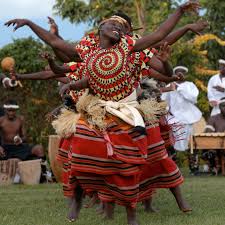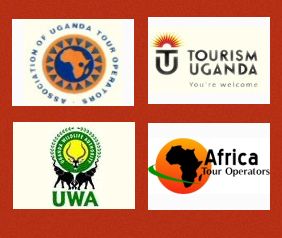The Uganda Cultures Insider’s Guide
Uganda is one East Africa country that is greatly endowed by nature in terms of culture and history. While here,Uganda culture you will be surprised to see and take pictures of the most endangered group of people; the pygmies locally referred to as the Batwa in the rain forests of south western part of the country. These people have the most interesting behaviors and characters and you will love to spend time with them even a single second will leave a broad smile on your face. This group feeds on bush meat and fruits. This makes hunting and fruit gathering their main activities carried out to ensure their survival. It’s interesting to see and interact with a group of people that lives in forests and has to go hunting wild animals and collect fruits for food.

Buganda cultural dance
This group of people is also talented when it comes to the local dances. They have organized traditional dances that are done in their language, they are very hospitable to an extent that they even fight to appear on the picture scene; they indeed love to interact with visitors. Uganda also has a diverse range of ethnic groups in addition to the pygmies / Batwa. These include the Baganda and several other tribes. In the north live the Lango and the Acholi, who speak Nilotic languages. To the east are the Iteso and Karamojong, who speak a Nilotic language. Lake Kyoga forms the northern boundary for the Bantu-speaking peoples, who dominate much of east, central and southern Africa.Lake Kyoga serves as a rough boundary between Bantu speakers in the south and Nilotic and Central Sudanic language speakers in the north. Despite the division between north and south in political affairs, this linguistic boundary actually runs roughly from northwest to southeast, near the course of the Nile. However, many Ugandans live among people who speak different languages, especially in rural areas. Some sources describe regional variation in terms of physical characteristics, clothing, bodily adornment, and mannerisms, but others claim that those differences are disappearing.
Bantu speakers probably entered southern Uganda by the end of the first millennium. They had developed centralized kingdoms by the fifteenth or sixteenth century, and after independence from British rule in 1962, Bantu speakers constituted roughly two-thirds of the population. They are classified as either Eastern Lacustrine or Western Lacustrine Bantu. The Eastern Lacustrine Bantu speakers include the Baganda people whose language is Luganda, the Basoga, and many smaller societies in Uganda, Tanzania, and Kenya. The Western Lacustrine Bantu speakers include the Banyoro, the Batoro, the Banyankole, and several smaller populations in Uganda safars.

